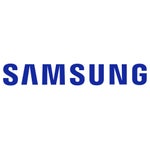News
Apple Wanted iPhone 17 Air to Be a Port-Free Device – But What Changed?
Apple Wanted iPhone 17 Air to Be a Port-Free Device – But What Changed?
Apple has always been at the forefront of innovation, and the upcoming iPhone 17 Air is no exception. Originally, Apple aimed to make this model completely port-free, relying solely on wireless charging. However, due to regulatory challenges and consumer concerns, the company decided to include a USB-C port instead. This decision marks a significant turning point in Apple's design philosophy. What led Apple to change its strategy, and what does this mean for the future of slimmer models? Let’s dive into the details.
Apple’s Bold Vision for a Port-Free iPhone 17 Air
According to reports from Bloomberg’s Mark Gurman, Apple initially planned the iPhone 17 Air as a portless smartphone, eliminating the USB-C port altogether. The idea was to create a sleeker, more durable device with improved water resistance and a seamless design.
Why Did Apple Want a Port-Free Device?
-
Minimalist Aesthetic: Apple prefers a clean, uninterrupted design for its devices.
-
Enhanced Durability: Removing ports could reduce dust and water damage, making the device more resistant to environmental factors.
-
Wireless Charging Push: Apple has been heavily investing in MagSafe technology, making wireless charging more efficient.
-
Future-Proofing: A port-free model could pave the way for a completely wireless Apple ecosystem.
However, despite these advantages, Apple ultimately abandoned the fully portless concept—at least for now.
Why Did Apple Abandon the Port-Free Design?
While a port-free iPhone 17 Air may sound like the future, Apple faced several challenges that led to its decision to retain the USB-C port.
1. Regulatory Compliance
European Union (EU) regulators mandated that all smartphones adopt USB-C charging to create a universal standard. This forced Apple to comply, making a completely wireless model impractical in the current market.
2. Charging Speed & Convenience
Wireless charging, while improving, still lags behind wired charging in terms of speed and efficiency. Many users rely on fast-charging capabilities that MagSafe and other wireless solutions cannot yet match.
3. Data Transfer Limitations
A port-free iPhone would force users to rely solely on wireless data transfer, which is often slower than using a USB-C connection—especially for professionals transferring large files.
4. Consumer Backlash & Accessibility
Apple enthusiasts voiced concerns about losing physical connectivity. Many users still depend on wired headphones, CarPlay connections, and accessories that require a port.
iPhone 17 Air: Features & What to Expect
Although Apple scrapped its port-free vision, the iPhone 17 Air still brings some exciting changes. Let’s explore what’s rumored for this model:
1. Slimmer & Lighter Design
-
The iPhone 17 Air is expected to be Apple’s thinnest smartphone ever.
-
It will feature a 6.6-inch OLED display with Dynamic Island.
-
The device will likely use a lighter titanium frame for better durability.
2. Camera Control Button
-
Apple is introducing a dedicated Camera Control button.
-
This will allow users to quickly adjust settings and capture photos more efficiently.
-
The button may also support pressure sensitivity for added functionality.
3. Battery Life Improvements
-
Apple is rumored to include a larger battery for improved performance.
-
Advanced battery efficiency optimizations could extend usage times beyond current iPhones.
4. USB-C Port for Charging & Data Transfer
-
Despite initial plans, Apple is keeping the USB-C port.
-
This allows for faster charging and data transfer speeds compared to wireless-only solutions.
Comparison: iPhone 17 Air vs. iPhone 16 Series
|
Feature |
iPhone 16 Pro |
iPhone 17 Air (Rumored) |
|
Design |
Titanium Frame |
Slimmer, Lighter Build |
|
Display |
6.1” / 6.7” OLED |
6.6” OLED, Dynamic Island |
|
Camera |
Standard Controls |
Camera Control Button |
|
Charging Port |
USB-C |
USB-C (No Port-Free Design) |
|
Battery Life |
~24 Hours |
Improved Efficiency |
Will Apple Eventually Go Fully Port-Free?
While the iPhone 17 Air will retain a USB-C port, Apple’s vision of a port-free smartphone isn’t entirely dead. The company continues to innovate in wireless charging and data transfer technologies, making a portless iPhone a real possibility in the future.
What Needs to Improve for a Port-Free iPhone?
-
Faster Wireless Charging: MagSafe would need to match the speed of wired fast charging.
-
More Efficient Wireless Data Transfer: Apple would need to enhance AirDrop and Wi-Fi transfer speeds.
-
Stronger Market Acceptance: Consumers need to be fully ready to embrace a portless future.
Frequently Asked Questions
1. Why did Apple want the iPhone 17 Air to be port-free?
Apple aimed for a sleeker, more durable design with better water resistance and a fully wireless experience.
2. Why did Apple keep the USB-C port?
Due to EU regulations, charging efficiency concerns, and consumer demand, Apple decided to keep the USB-C port.
3. Will Apple eventually release a port-free iPhone?
Most likely, but only once wireless charging and data transfer technologies improve significantly.
4. What are the key upgrades in the iPhone 17 Air?
A slimmer design, Camera Control button, larger battery, and improved efficiency compared to current iPhones.
5. When will the iPhone 17 Air be released?
Apple is anticipated to unveil the iPhone 17 Air in September 2025.
Related Articles
-
Apple to Replace the iPhone 17 Pro Max with a 17 Ultra: A Bold New Move?
-
Apple iPhone 17 Air Exact Dimensions Leak: A Sneak Peek into the Future of Slim Tech
-
Apple iPhone 17 Air and 17 Pro Designs Revealed: What's New and Exciting
-
When Is the iPhone 17 Coming Out? Release Date, Rumors, and All the Details
Final Thoughts: A Step Toward the Future
-
Apple’s original plan for the iPhone 17 Air was to eliminate ports entirely, but regulatory pressure, user convenience, and technical limitations led them to retain the USB-C port.
-
While the iPhone 17 Air won’t be portless, it still represents a significant shift toward slimmer models and an eventual wireless future.
-
Apple’s long-term vision remains clear moving toward a world without ports.
-
Whether that happens with iPhone 18, 19, or beyond, the foundation is already being laid.
-
Stay tuned for more updates on Apple’s future innovations!












